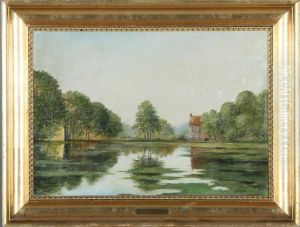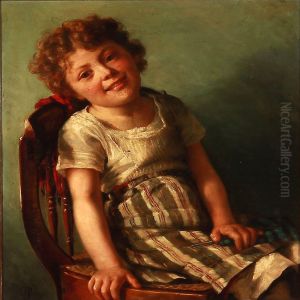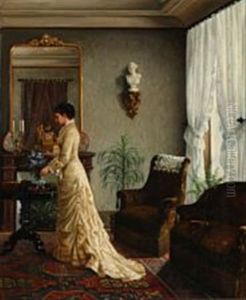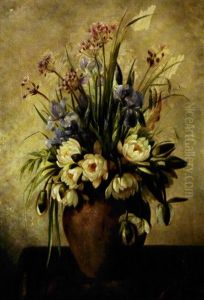Julie Caroline Hamann Paintings
Julie Caroline Hamann, an artist whose life spanned from the late 19th century into the mid-20th century, remains a figure of modest renown in the broader narrative of art history. Born in 1876, Hamann's career unfolded during a time of significant transformation in the art world, a period marked by the emergence of modernism and a departure from traditional forms and subjects. Despite the scarcity of widespread recognition, her work contributes valuable insights into the era's artistic explorations and the role of female artists during this transformative period.
Hamann's artistic journey was characterized by her engagement with the genres of portraiture and landscape painting. Her works are noted for their delicate sensitivity to light and color, attributes that reflect the influence of Impressionism on her style. This influence suggests that she was attuned to the contemporary movements of her time, even as she developed a distinct voice within these prevailing trends. Unfortunately, like many women artists of her era, Hamann's career was likely constrained by the social and cultural barriers that limited women's access to formal training and professional opportunities in the arts.
Throughout her life, Julie Caroline Hamann navigated the challenges of being a woman in a male-dominated art world. Despite these obstacles, she managed to cultivate a body of work that, while perhaps not widely celebrated, demonstrated her skill, dedication, and unique perspective. Her death in 1968 marked the end of a long life lived through profound changes in the world of art, changes that she both witnessed and contributed to through her artistic endeavors.
The legacy of Julie Caroline Hamann is a testament to the many overlooked and underappreciated artists of her time, particularly women, whose talents and contributions have only begun to be recognized and valued in more recent decades. Through her paintings, Hamann offers a glimpse into the aesthetics and concerns of her era, providing a valuable link in the chain of art history that spans from the Impressionist movement to the modernist innovations of the 20th century.





